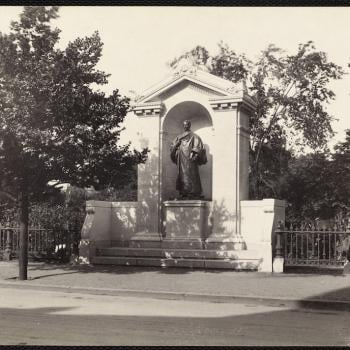As a single footstep will not make a path on the earth, so a single thought will not make a pathway in the mind. To make a deep physical path, we walk again and again. To make a deep mental path, we must think over and over the kind of thoughts we wish to dominate our lives.
Attributed to Henry David Thoreau
One of the blogs I regularly visit is Brad Warner’s Hardcore Zen. Brad presents as Zen’s bad boy, and can be a fun read. While he veers off the rails upon occasion I think in general what he has to offer is valuable (Much less so the unmoderated comments section. About those I give any possible reader a fair warning: they mostly demonstrate considerable ignorance of the Zen way and are in fact frequently vile in tone as well as in content…).
Anyway, I was intrigued by Brad’s recent rumination on the Buddhist precepts, a subject anyone who visits here regularly knows I think about a great deal. Brad offered his opinion that the precepts need to be treated as koan. Like many people who have not formally trained in that particular discipline, he doesn’t quite get what a koan is. On the other hand like many people who have sat deep and long he has an intuitive insight into the deeper matter to which koans point.
Koans are a type of meditative discipline in which one takes a word, or a phrase, a brief anecdote or a fairy tale as an “object of meditation.” Now for it to be a koan this word or phrase or brief anecdote or fairy tale must contain an expression of reality, some sense of the great empty and our creative precious passingness within that great empty. As such the word or phrase or anecdote or fairy tale becomes an invitation to an intimate encounter with a spiritual director, and really, and most importantly, with ourselves.
When a koan is encountered with diligence, creativity and humility, on occasion an intimate understanding of that great empty and the precious passinging individual erupts within the practitioner’s heart and mind.
So it should be no suprise how in formal Japanese-derived curriculum koan introspection practice, one, of course, formally encounters the precepts, specifically as the sixteen Bodhisattva precepts, as koan.
There are at least three levels to anything we encounter in the koan project: the literal, the compassionate and the essential.
There are the words themselves and the meaning they are intended to convey. Here is where we encounter the literal rule. Do not kill. Do not lie. Do not steal. Do not misuse sex. Do not become intoxictated. And so on…
Frankly, there are times we just need the rules. Much of our lives we’re wandering around in the thickets. Haven’t a clue. We’re lost. And the precepts can become a life line thrown out to us. Sometimes we just have to grab that line. Sometimes we just have to follow the rules. (Now we should be a bit careful. Does that lifeline look like it has some solidity? Or is it a thin vine? If there’s time, look closely at the rules you’re committing to…)
Contrary to the solipsistic misunderstanding of Zen Buddhism promulgated here and there, particularly on the web, we do not exist by ourselves. It is not all about me. And to live that way is to invite terrible consequences. Here is an inescapable truth: everything we do has consequences. So, sometimes, often times, in our headlong rush of living, we need some external guidelines, some generally trustworthy set of rules by which to mark what we’re up to.
But if we live only in the realm of rules we are strangled by dead letters. And not only are our own lives constrained, we become caracatures of our true potentiality.
We also need to recall how we are so profoundly tied up together, how our individual lives, our very intimate personal existence, are each completely woven out of each other. We are more intimate than the words can ever convey. We are all relatives. We are all family. And there are ways to encounter the words do not kill, do not steal, do not lie, do not misuse your sexuality, and do not become intoxicated, that become the living expressions of this intimate dance of life.
Here the precepts open to a way of life that is creative, expressive, and inviting.
And, as they say on late night television, wait there’s more.
Each moment of our lives, as we face death, as we open our mouths to speak, as we encounter each “other” in our lives, as we seek intimate moments with another, as try to be clear; each of these events turns out to be a gate.
And if we get it, if we notice the gate, what was once a barrier, is thrown open, and we find our way through to a boundless freedom.
And that’s where we find the deepest invitation of precept as koan.
Unfortunately this one needs to rest as an assertion and as an invitation…
But it is there, Guanyin’s mercy, the universe itself lurking in the shadows of our actions and thoughts, a divine mugger just waiting for you to walk into the dark places…
Try it, you might not like it, but you’ll be grateful…













